Tokyo Graphic Recorder depicts and facilitates various discussions held within companies, media, and other settings. This time, Junko Shimizu of Tokyo Graphic Recorder—who pursues this work alongside her career as a Yahoo! JAPAN UX designer—and Researcher Yoshida of Wakamon discussed how to create new "spaces" where creativity can flourish.
All creation progresses through "visualization"
Yoshida: First, could you tell us about your personal Tokyo Graphic Recorder activities, Ms. Shimizu?
Shimizu: Sure. The original starting point was a portal site where I visualized and collected conversations I wanted to hear. Building on that media, I now participate in corporate conferences and events, drawing live as a performance (Graphic Recording) to energize the atmosphere. I also provide that content to media outlets like TV and magazines.
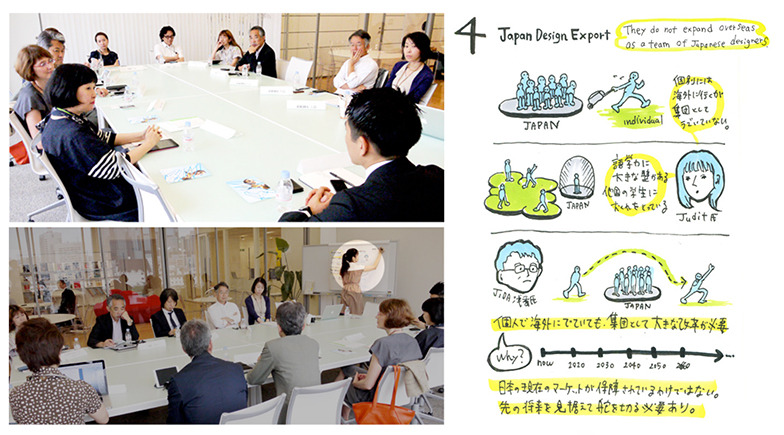
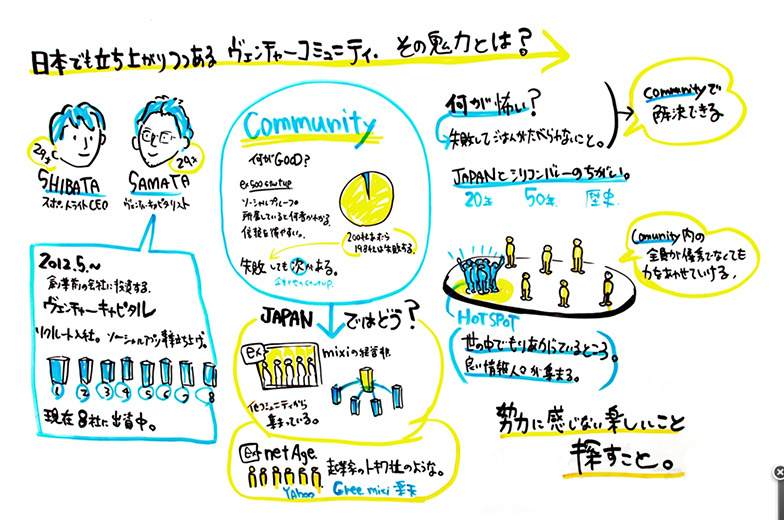
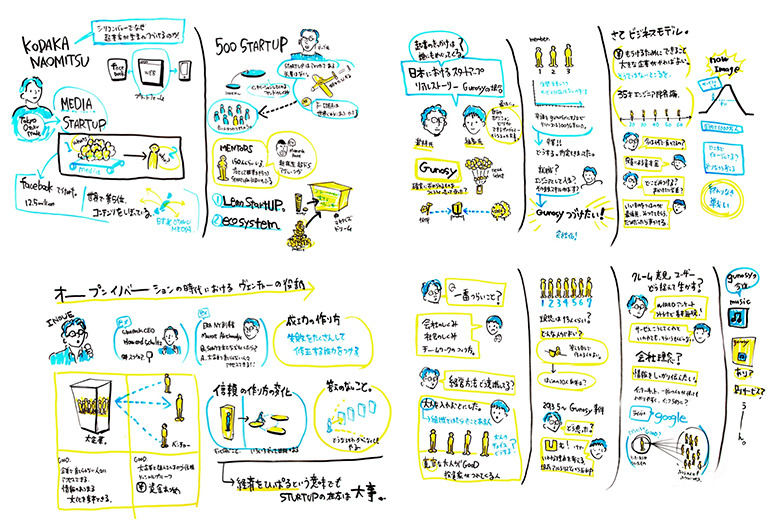
Yoshida: What made you want to do this?
Shimizu: After graduating from art school, I worked at a web production company for three years. The work there involved creating graphics after a series of miscommunications, essentially just making requested revisions. I started to vaguely question this approach. To engage in more thoughtful design, I began seeking out conversations about topics beyond design—that was the start.

Yoshida: So the root issue is this feeling of a "game of telephone" or vertical silos in the creative field?
Shimizu: Yes. But when I started, my awareness wasn't about societal issues yet. It was purely a sense of crisis that my career as a designer was hitting a dead end. I wanted to expand my knowledge first, so I went to various places, listened to different discussions, and posted my own illustrations of those conversations.
Yoshida: And because those meeting notes were so graphical and presented something new, they started gaining attention before you knew it, right?
Shimizu: The turning point came during my final year, when I attended no problem's free advertising school while still working. I learned that you can't earn significant money just with pretty visuals. You have to mix in business strategy, marketing knowledge, and everything else to truly create valuable work.
Yoshida: My strategist mentor also says strategy isn't a relay race from strategy to creative. Strategy is like a big arrow forming the foundation underneath everything, with various elements built upon it.
Shimizu: My ideal structure is similar. If one project is a tree, Logic (strategy) is the trunk, and Magic (expression) is the leaves. Typically, clients or strategists build the tree, while production teams or designers create the leaves. As a designer myself, I spent three years solely making leaves. I got fast and good at it, but I felt so many creations lacked integration between the tree and the leaves.
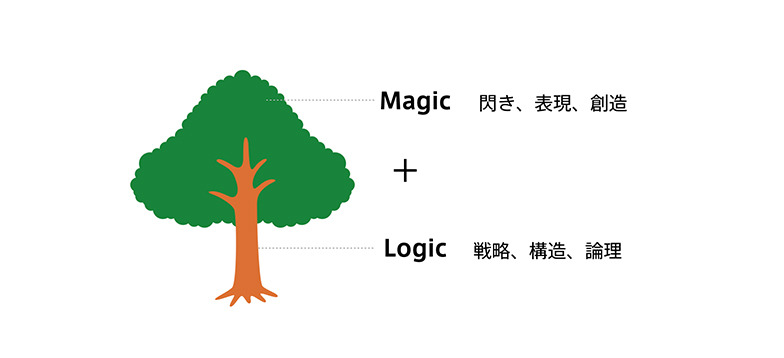

Yoshida: It's true—sometimes those creating the leaves don't know the shape of the tree, or more fundamentally, no one understands the whole picture. The result is either pure Magic or Logic that's too thin...
Shimizu: Orchestras have sheet music, and top-tier kitchens always have recipes. Based on the hypothesis that all creation progresses only through "visualization," Graphic Recording aims to guide the essential discussions in creation toward better outcomes.
The "Cross-Border" Mindset That Breaks Through Déjà Vu
Yoshida: Through Tokyo Graphic Recorder's activities, you moved beyond being a leaf artisan and approached a position where you could see the overall quality in a unified, end-to-end form.
Shimizu: I realized we couldn't create anything valuable without doing so. What started as my personal study notes has expanded into various forms: collaborating with journalists as a means to convey news, or facilitating business and product development sessions.
Yoshida: It's fascinating how diverse the roles have become. As a strategic planner, my work relies heavily on language for expression and communication. But language is highly culture-dependent, and it often struggles to convey that "this is the vibe!" aspect, right? I frequently feel the limitations of verbal expression, so I deeply understand the value of "visualization" that Graphic Recording brings.
Shimizu: Actually, regarding the value of "visualization," I wasn't entirely confident about how I could leverage it myself. So, I made the Graphic Recording technique publicly available online. I took on requests as they came in, giving each one my all to create case studies. I built value through this iterative process. This approach might be similar to the open-source mindset found among engineers.
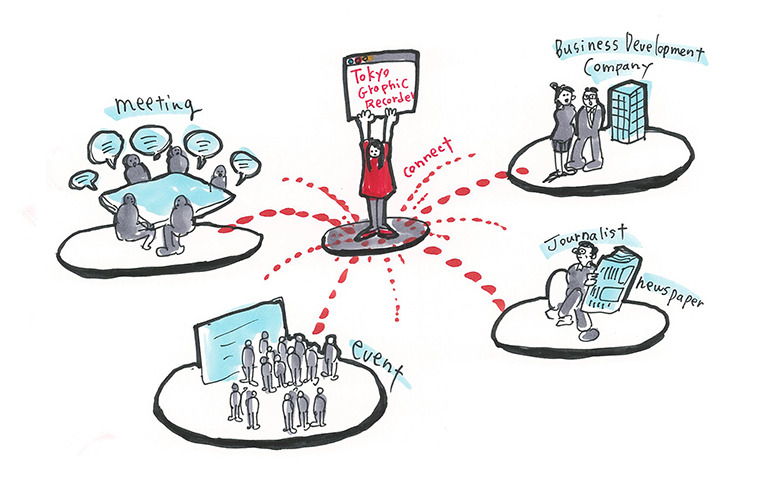
Yoshida: I also sense a kind of "boundary-crossing" spirit. When you show young people mockups of new product models, they all say things like, "I thought something like this already existed." That's how much the world is enveloped in a sense of déjà vu. So unless everyone crosses boundaries, it might be difficult to create anything new.
Shimizu: True. In that context, it might be presumptuous for creators to think they're "giving" to users. I believe what's truly exciting for society is figuring out how to create an environment where everyone can think of ways to use the materials provided.

Graphic Recording at the Asahi Shimbun "Future Media Project"
Yoshida: Starting from your own notebook, how has it now connected so extensively with the world, reaching unexpected expanses?
Shimizu: It evolved from a portal site to event performances, then shifted to facilitation. Recently, requests for me as a Graphic Recording presentation coach have increased too. While I somewhat anticipated this progression, one completely unexpected development was joining Yahoo! Japan. I could have continued as a freelance external consultant, but I chose not to. I wanted to see if I could embed this unconventional approach internally, as an insider rather than an outsider. Making Graphic Recording work in a 6,000-person company is the new challenge.
Yoshida: Being in that spectrum—from one-person projects to a 6,000-person company—has it given you any unique insights?
Shimizu: Fundamentally, what I do is "visualize discussions." But the output changes depending on the members, the situation, and the agenda. Realizing that was fascinating. For instance, even with materials—we've used super-smooth paper carefully projected onto TVs, but at a conference with former 'Advertising Critique' editor Koichi Kawajiri, we drew on cardboard trash picked up from above, saying "Nothing to draw on, so this will do" (laughs). But the conclusion doesn't really change much. Being able to experiment like that is exciting.
There's value in the unfinished and chaotic
Yoshida: Creativity versus strategy, or big corporations versus startups—these are often discussed in binary terms. But rather than giving up because they don't mesh well or just conforming, Mr. Shimizu finds it interesting to "do both." What kind of image do you have for your work and career?
Shimizu: In that sense, what I gained during my year at the design consulting firm after graduating from np Advertising School was huge. There were three bosses around 65 years old, each a pro in business, branding, and design. Seeing them view the world with their seasoned 65-year-old sensibilities, land work, and run their own operations looked incredibly enjoyable. So, since I still have about 40 years left, I want to keep starting all sorts of new things over and over.
Yoshida: In terms of job roles, what do you think is the biggest difference between what you do at Tokyo Graphic Recorder and what people called art directors do in the design field?
Shimizu: Art directors and designers seem extremely afraid of incompleteness or chaos. Their mindset just doesn't shift towards sharing work in progress.
Conversely, through Graphic Recording, I want to convey that "thinking about that stage is the most fun and has the highest potential to create new value."
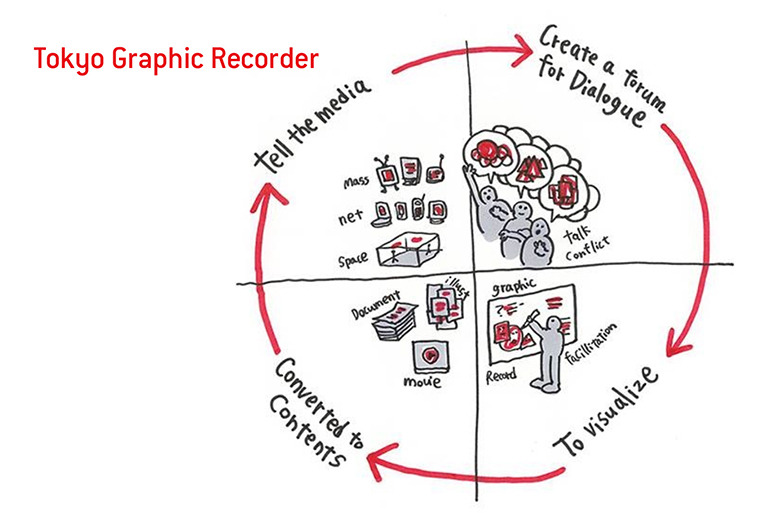
Yoshida: It's paradoxical, but the recent proliferation of methods like Lean Startup and Rapid Prototyping—where you share the process itself—reflects that the value society now demands from planning and creation can no longer be achieved by endlessly cycling through traditional molds. You, Mr. Shimizu, take a spear called Graphic Recording and thrust it into various places. Next time, please tell us more specifically about that strategy. (To be continued)
 【Wakamon Profile】
【Wakamon Profile】
Dentsu Inc. Wakamon (Youth Research Department) is a planning team that engages with the real lives and mindsets of young people, primarily high school and university students. We explore hints to brighten and invigorate the near future, starting from their "now." By anticipating the future through their insights, we realize new businesses that foster better relationships between youth and society. Currently, 14 project members are based across our Tokyo headquarters, Kansai branch, and Chubu branch. We also share updates on the Wakamon Facebook page ( https://www.facebook.com/wakamon.dentsu ).





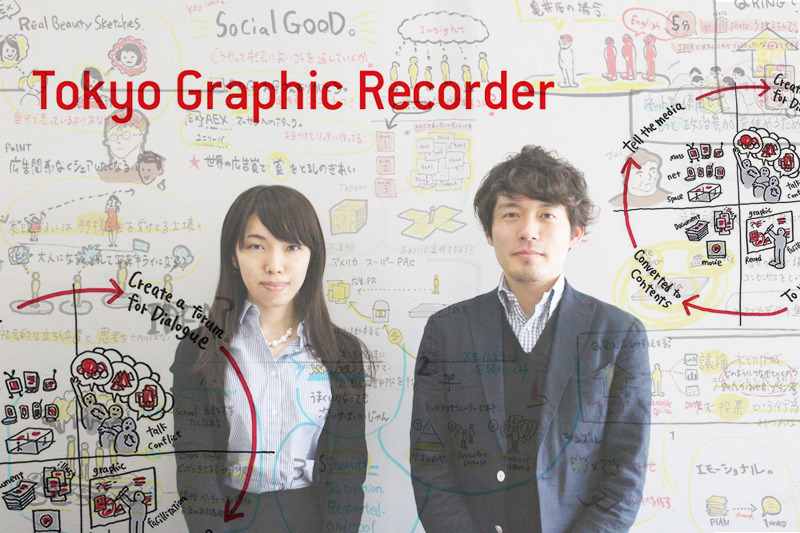









 【Wakamon Profile】
【Wakamon Profile】
